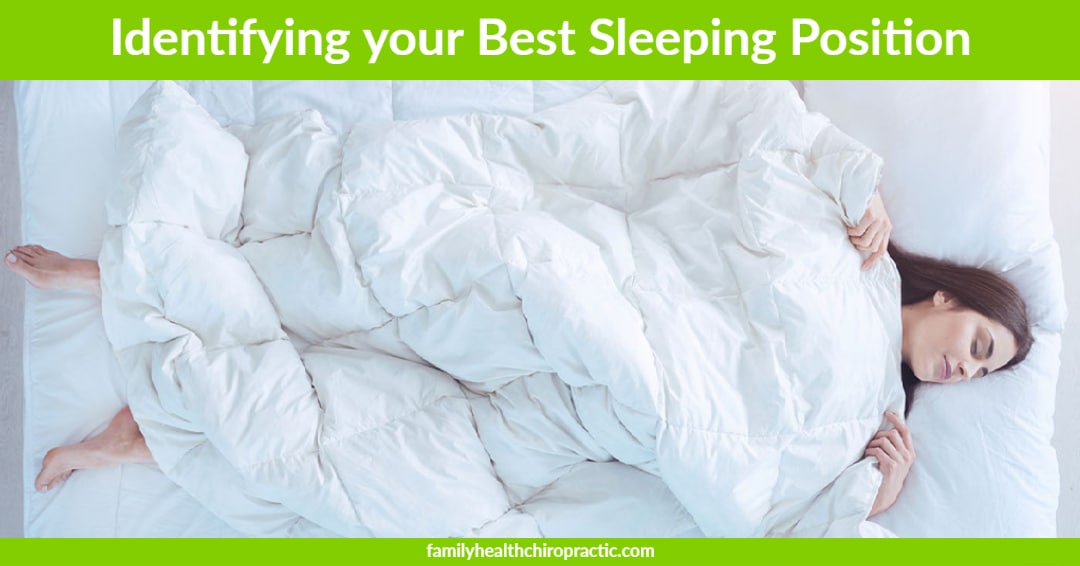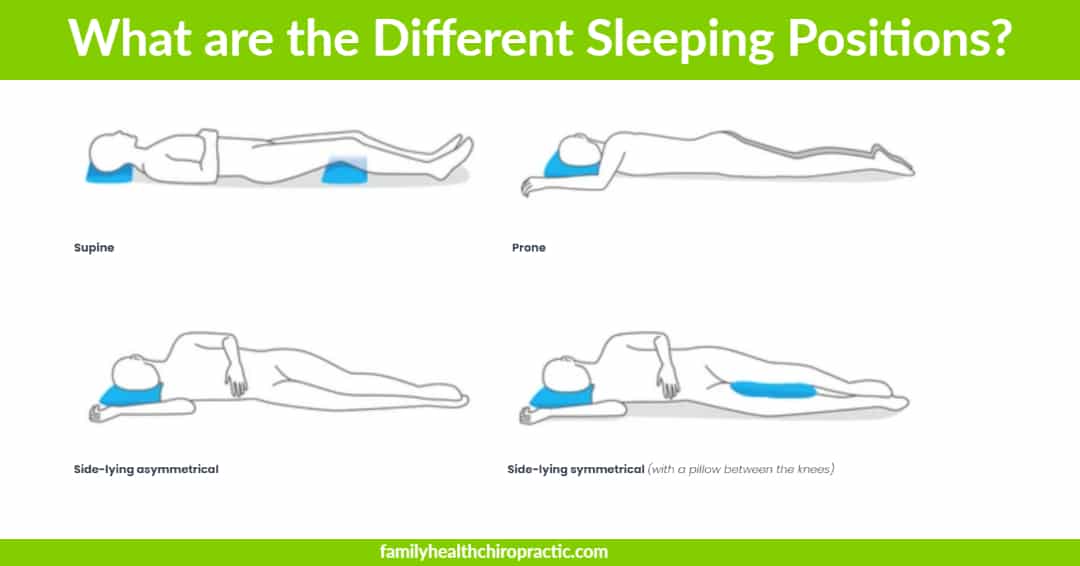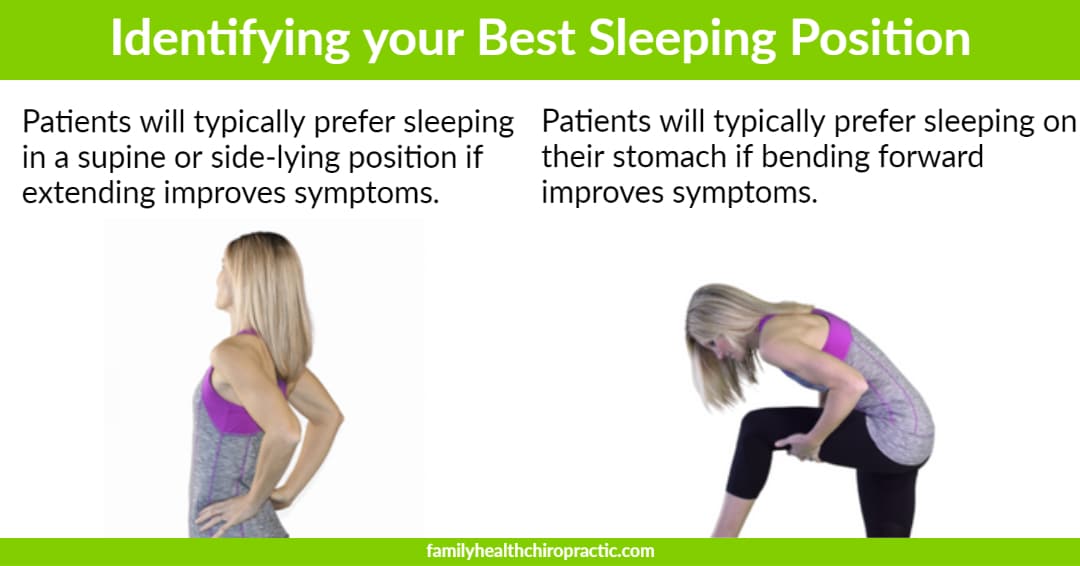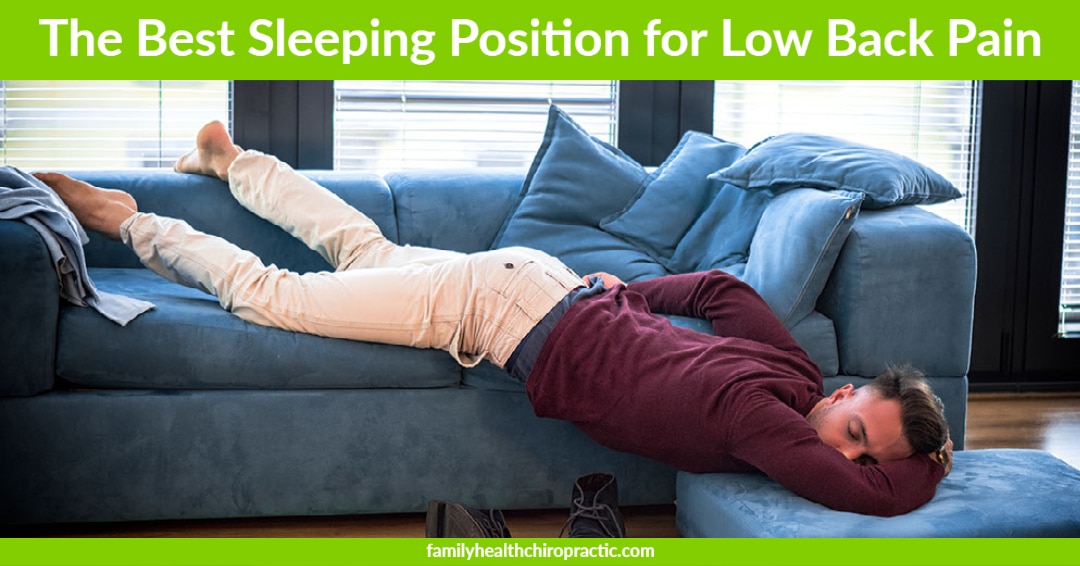Identifying the best sleeping position is one of the most important factors that can help to improve overall health, wellness and vitality.
During sleep, our body works to restore and repair itself. [1] Our sleep position can either help or hinder that process, and your spine, including the spine curvature that you have will influence the quality of sleep in various positions.
It's very common for people to wake up with low back pain, neck pain and various ailments because of their sleep position.
We spend a third of our lives [2] asleep or resting, so it’s important to choose a sleep position that assists your body with physical recovery.
A proper sleep position can relieve stress on your spine, while an unhealthy position can increase pain or stiffness in the back, arms, or shoulders, all while contributing to lower-quality sleep. [3]
In this article, we will be discussing the best sleeping positions for low back pain.
What Is the Best Sleeping Position?
The best sleep position is one that promotes a healthy spinal alignment from your hips all the way to your head.
What that looks like for you depends on your personal health situation, body composition including weight and density and what you find comfortable.
What you should take from that is that everyone is unique and different and the best sleeping position for you, may be completely different than your significant other.
That said, there are some positions that are considered healthier than others.
Research has confirmed that sleep postures can increase or decrease spinal pain, and addressing sleep posture can reduce the development of symptoms. [4] [5] [6]
Fortunately, we are now starting to be able to help patients modify sleep postures through appropriate intervention. [7]
After reviewing the latest research, and like most topics that require a doctor’s advice, it turns out there’s no simple answer.
But there is some worthwhile advice.

What are Different Sleeping Positions?
There are four primary sleeping positions:
- Supine or sleeping on your back
- Prone or sleeping on your stomach
- Side-lying asymmetrical (no pillow between your knee)
- Side-lying symmetrical (with a pillow or support between your knee)
Generally speaking, sleeping on the side or back is considered more beneficial than sleeping on the stomach for someone experiencing low back pain. [7]
In either of these sleep positions, it’s easier to keep your spine supported and balanced, which relieves pressure on the spinal tissues and enables your muscles to relax and recover.
However, if sleeping on your stomach feels good to you, don’t feel forced to change it.
At the end of the day, simply getting sleep is more important to worrying about the best sleep position possible. You can always work on minimizing your risk of pain and improving spinal alignment with the right mattress and pillow.
Different sleep positions provide different benefits that may be helpful for you if you’re dealing with back pain, pregnancy, allergies, acid reflux, or another health condition.
In these cases, it may be worth trying a new sleep position to enable more restful sleep.
In one study, a group of adults with back pain were trained to sleep on their back or their side. They experienced significant pain relief in just four weeks.
Adjusting to a new sleep position takes time, but it is possible. Be patient with yourself and use pillows to help train your body to the new position.

Two Simple Tests to Determine Sleeping Position Preference
Directional preference is a way to troubleshoot what the best sleeping position might be for you.
This includes defining a flexion (bending forward) vs. extension (bending back) position and which one feels better to you.
To determine directional preference, perform repeated end range movements in either extension, flexion, and/or lateral bending, while monitoring for the presence of centralization or peripheralization of symptoms.
Extension testing progresses through the following stages:
- standing extension (standing up and bending back)
- lying prone (on your stomach)
- lying prone while propped up on the elbows (on your stomach with elbows propped)
- lying prone while propping up on extended arms (on your stomach and pressing up)
- performing repetitive extension, 1-5 sets of 10 repetitions or until symptoms change
If you do all the above and you feel better (less pain), then you have extension biased low back pain and you may be more comfortable sleeping on your stomach. Sometimes placing a pillow beneath your chest for added extension and support will help as well.
Flexion testing progresses through similar stages:
- lay on your back and bring your knees to your chest
- standing, bend forward
Once again, if you feel better with flexion based movements, then you have flexion biased low back pain and you may be more comfortable sleeping on your back or side.

Structural Diagnosis Can Also Help Determine Sleeping Position
There are a few clinical conditions to consider when it comes to structural deformation and problems that influence sleep quality and position.
A few common clinical conditions that have strong influences on sleeping position include:
- Spondylosis (vertebral arthritis and degeneration)
- Spondylolysthesis
- Osteoporotic Compression Fractures
- Maigne Syndrome
- Uneven Hips
- Pregnancy-related Low Back Pain
Spondylosis is an umbrella term for different forms of age-related degeneration of the spine. The bones of the spine are called the vertebrae. Between each pair of vertebrae, there are three joints. There is a joint in the front of the spine that is called an intervertebral disc. Spondylosis is when any of these structures wear down and no longer provide they support they're intended to provide.
The term “spondylolisthesis” is derived from the Greek roots, spondylo, meaning spine, and listhesis, meaning to slide. Spondylolisthesis describes a forward slip of a vertebral body with respect to the vertebra below.
For both spondylosis and spondylolisthesis, you should avoid stomach sleeping.
Osteoporosis affects more than 10 million people in the United States – making it the most common metabolic disorder of bone. Osteoporosis is responsible for more than half a million vertebral compression fractures each year. Compression injuries occur when axial loads, usually combined with flexion, exceed a bone's capacity to support that load.
Patients with severe osteoporosis or compression fractures may not be able to sleep on your their back and should consider side sleeping.
Maigne syndrome, aka thoracolumbar junction syndrome, lumbodorsal syndrome, and posterior ramus syndrome is a commonly overlooked cause of pain in the lumbosacral region, iliac crest, and buttock. Maigne syndrome typically results from irritation of a thoracolumbar posterior ramus between T9 and L2. Facet joint dysfunction and degeneration are common culprits. Maigne syndrome is particularly elusive because the anatomical site of origin is often asymptomatic.
Asymmetrical side-sleeping can aggravate this condition.
The Bottom Line for Sleeping Positions
Since each presentation is unique with endless variability, there is no one-size-fits-all sleeping position.
Research suggests that the optimal sleep position is the one that allows patients to rest most comfortably without after-effects.
Finding the ideal sleep position usually takes some experimentation. Patients should progressively test to see if symptoms increase or decrease before spending significant time in any new position. Research has also suggested that back pain sufferers may benefit from alternating positions throughout the night.



